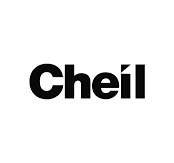Economic policy
This section reports on economic policy initiatives of the Czech government, the EU, and other entities that have a direct impact on the competitiveness of the country. It also includes information on economic priorities of the AmCham and other leading associations.
Show subcategories ▾
Spotlight issue

AmCham Health Care Council roundtable with Deputy Minister Dvořáček addressed priorities of the upcoming EU presidency and focused on ways to increase disease prevention
Czech healthcare withstood the massive stress of several waves of covid. Now the system will need to absorb a few hundred thousand sudden new users as Ukrainians take up temporary residence (of an indeterminate length) in the country.
View more
Consuming stagflationary shock
The war in Ukraine has affected the global economic outlook. The fears of potential disruption to Russian energy imports have pushed commodity prices up, which is likely to further exacerbate the already severe inflationary pressures. A shortage of Russian energy would also lower GDP growth, especially in highly dependent Europe. Moreover, the war is likely to hinder the expected easing of supply-chain issues. Given this, we have decided to revise our forecasts for Czech key macro and financial variables ahead of the regular quarterly update. We have increased our inflation forecast from 8.8% to 11.5% for this year. In addition, we have lowered our estimate for GDP growth from 4.9% to 3.1%. In our view, the CNB is likely to continue raising interest rates. Previously, we had expected rates to reach a peak of 5%, but now we see them peaking at 5.5%. Bringing interest rates back to policy-neutral level is likely to be postponed until next year.
View more
Czech inflation rose to 11.1% yoy in February
In February, Czech consumer prices increased by a further 1.3% mom. After seasonal adjustments, monthly price dynamics slowed from a significant 2.9% rise in January to 1.2% in February. Housing-related costs (contribution: 0.5pp), supported by continued growth in energy prices, and food (contribution: 0.3pp) were the main drivers of the 1.3% mom inflation. Imputed rents rose by 0.6% mom and food prices (excluding alcohol and tobacco) by 1.4% mom. However, prices also continued to grow in other categories of goods and services, such as transport due to higher fuel prices, so the inflation remained broad-based. Goods prices increased by 1.4% mom and prices in services by 1.0%.
View more

 Twitter
Twitter Linkedin
Linkedin Facebook
Facebook Google+
Google+




